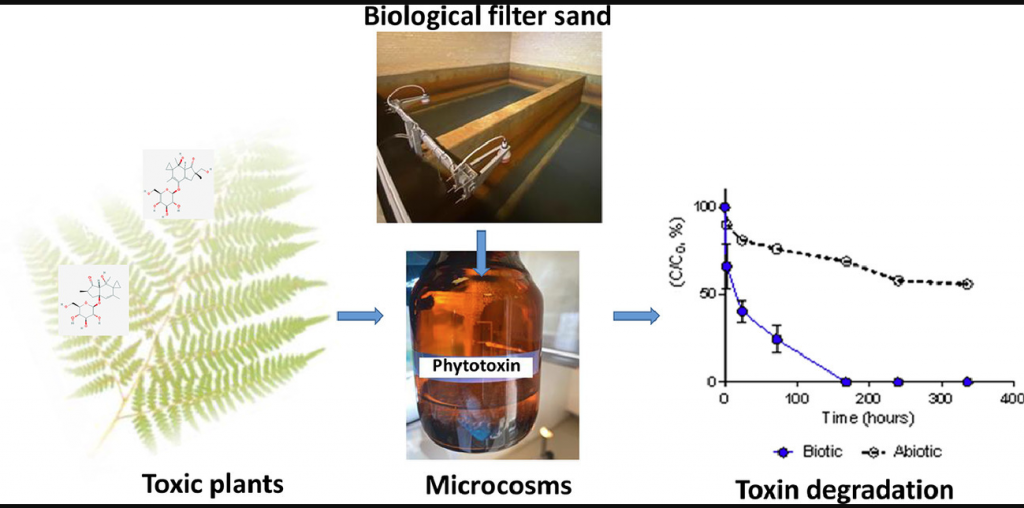
Hi all…as the Monty Python show used to say, “and now for something completely different.” I always have many papers set aside to send out to this list. By far the topics generating the most recent interest among researchers, regulators, and drinking water professionals are cyanotoxins, PFAS, and microplastics but I thought I’d take a break from these. It turns out that some researchers from Denmark are studying phytotoxins – those produced by plants – from the potential of them being contaminants with the potential to impair drinking water quality. Of several different phytotoxins spiked into groundwater and ultimately treated by 5 different filter types, two of them, jacobine N-oxide and senecionine N-oxide, were found to be non-biodegradable. They were also able to identify some degradation products.
The paper is open access if you want to learn more.
Bill
______________________________________________________________________________________
Removal of phytotoxins in filter sand used for drinking water treatment
Natasa Skrbic Mrkajic, Jawameer R.Hama, Bjarne W. Strobel, Hans Chr. B. Hansen, Lars Holm Rasmussen, Ann-Katrin Pedersen, Sarah C.B. Christensen, Mathilde J.Hedegaard
https://www.sciencedirect.com/science/article/pii/S0043135421008058?dgcid=raven_sd_via_email
Water Research Volume 205, 15 October 2021, 117610
Abstract
“Phytotoxins – toxins produced by plants – are contaminants with the potential to impair drinking water quality. They encompass a large group of toxic, partially persistent compounds that have been detected in seepage waters and in shallow wells used for drinking water production. If phytotoxins enter wells used for drinking water production, it is essential to know if the drinking water treatment processes will remove them from the water phase. However, it is currently unknown whether phytotoxins remain stable during traditional groundwater treatment using sand filters as the main treatment process. The objective of this study is to investigate removal potential of phytotoxins in biological sand filters and to asses if the removal potential is similar at different waterworks.
Microcosms were set up with filter sand and drinking water collected at different groundwater-based waterworks. To be able to monitor phytotoxin removal ptaquiloside, caudatoside, gramine, sparteine, jacobine N-oxide, senecionine N-oxide and caffeine were applied at initial concentrations of 300 µg L-1, which is approx. two orders of magnitude higher than currently detected in environment, but expected to cover extreme environmental conditions. Removal was monitored over a period of 14 days. Despite the high initial concentration, all filter sands removed ptaquiloside and caudatoside completely from the water phase and at waterworks where pellet softening was implemented (pH 8.4) prior to rapid sand filtration, complete removal occurred within the first 30 min. All filter sands removed gramine and sparteine, primarily by a biological process, while jacobine N-oxide, senecionine N-oxide and caffeine were recalcitrant in the filter sands. During degradation of ptaquiloside and caudatoside we observed formation and subsequent removal of degradation products pterosin B and A. Filter sands with the highest removal potential were characterised by high contents of deposited iron and manganese oxides and hence large specific surface areas. Difference between bacterial communities investigated by 16S rRNA gene analyses did not explain different removal in the filter sands.
All five investigated filter sands showed similar degradation patterns regardless of water chemistry and waterworks of origin. In drinking water treatment systems biological sand filters might therefore remove phytotoxin contaminants such as ptaquiloside, caudatoside, gramine, sparteine, while for other compounds e.g. jacobine N-oxide, senecionine N-oxide further investigations involving more advanced treatment options are needed.”





